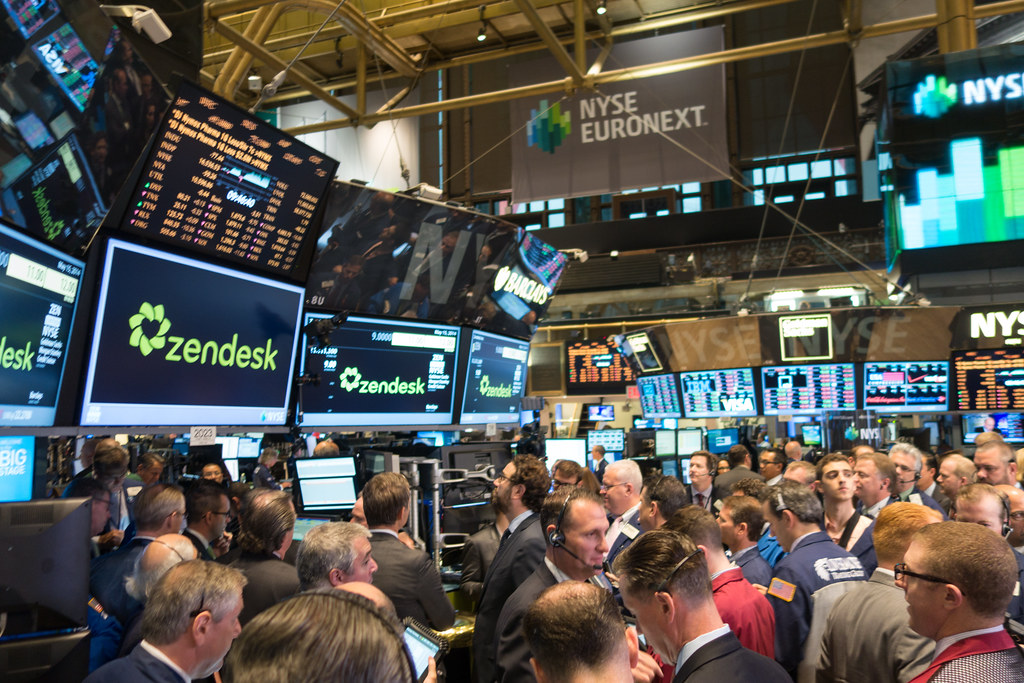Quant trading is a part of algorithmic trading where mathematical models and computer programs are used to make automatic trade decisions. People who do quant trades apply complicated algorithms and statistical models to find chances for trading and carry out the trades very quickly. This method of trading has grown more common lately because of progress in technology and access to a lot of data.

Quantitative trading approaches are split into two types: systematic and discretionary. Systematic methods use computer software to find and make trades by following set rules and calculations. On the other side, discretionary strategies depend on human feelings and choices to find chances for trading. Although each method has good points and bad points, in recent times, more people have chosen systematic trading because it can handle a lot of data quickly and make trades quickly.
Quantitative traders employ different tools for quantitative analysis to find trading chances and control risk, such as statistical methods, learning algorithms from machines, and software for visualizing data. With these instruments, quantitative traders can examine vast amounts of data and spot patterns that might not be seen directly. This helps them decide better on trades and control risk with greater efficiency.
Key Takeaways
- Quantitative trading uses math models and computer software to make automatic trade decisions.
- Systematic and discretionary trading strategies are the two main approaches to quant trading.
- Quantitative traders employ different tools for analyzing numbers to find chances to trade and control danger.
Quantitative Trading Strategies
Investors base quantitative trading strategies, which are investment approaches, on mathematical and statistical models. They employ these models to pinpoint potential trading opportunities and determine the timing for purchasing or selling financial instruments. Various forms of quantitative trading strategies exist, such as statistical arbitrage and algorithmic execution; they also include market making.
Statistical Arbitrage
Identifying mispricings in financial instruments and exploiting them for profit—that is the essence of statistical arbitrage. The strategy utilizes statistical models to discern patterns within various securities’ prices; upon recognizing a mispricing, traders take action. Their course involves purchasing undervalued securities; concurrently, they sell overvalued ones with an eye towards reaping profits when price convergence occurs.
Algorithmic Execution
Using computer algorithms to execute trades is the strategy of algorithmic execution. These algorithms serve two key purposes: capitalizing on market inefficiencies and reducing large order impacts on the market; furthermore, they facilitate other quantitative trading strategies, notably statistical arbitrage.
Market Making
Engaging in market-making strategy: an active approach to the provision of liquidity—it involves buying and selling financial instruments. The execution of this strategy revolves around placing bids and offers on diverse securities; ultimately, profit emerges from the bid-ask spread. By purchasing securities at the bid price, then reselling them at the ask value—or alternatively, by offering goods for sale at the ask price and repurchasing them again when they reach their initial bid rate—market makers establish profitable edges within transactions.
When implemented correctly, quantitative trading strategies can yield high profitability, yet their execution demands a substantial infusion of expertise and resources. Interested traders must prepare to invest not only in advanced technology but also in data analysis tools. Continuous monitoring and subsequent adjustment of strategies are crucial for staying abreast of shifting market conditions.
Quantitative Analysis Tools
Quantitative analysis tools are very important for good quant trading. They assist traders in finding opportunities to make profit, improve their trading methods, and control the risks. Here are some of the most important quantitative analysis tools used in quant trading.

Data Mining
Data mining involves pulling out important understandings and repeating occurrences from large sets of data. People who are quantitative traders use this technique to find trends, shapes, and irregularities in the market. They analyze historical data to identify profitable trading opportunities and develop trading strategies.
Python, R, and MATLAB are tools for data mining that people use a lot in quantitative trading. They have many statistical and machine learning algorithms to study and create models from financial information.
Backtesting Platforms
Backtesting involves using past data to check how well a trading plan works, helping to see if it can make money. Software for backtesting lets traders examine and improve their trading methods. These platforms offer various functions, like showing data in visual forms., analyzing how well things are working, and making improvements.
Many traders who do quant trading like to use platforms such as Quantopian, Amibroker, and TradeStation for backtesting. These services offer different functions that help the traders check and improve their trading strategies.
Risk Management Software
Risk management plays a crucial role in quantitative trading. Software for managing risk is utilized to spot and handle the risks that come with trade activities. These instruments enable merchants to establish limits on their risk, keep an eye on how much risk they’re exposed to, and handle the overall risk in their investment collection.
Software for managing risk, like RiskMetrics, Value at Risk (VaR), and Monte Carlo simulation, is often used in quantitative trading. These applications offer various functions to help traders control their risks well.
To sum up, tools that analyze numbers are very important for doing well in quantitative trading. Things like data mining, platforms for testing strategies with past data, and programs to manage risk are key instruments in this kind of trading. These instruments enable merchants to pinpoint opportunities for beneficial trades, experiment with and polish their trading tactics, and control risk in an efficient manner.
Machine Learning in Quantitative Trading
Machine learning is now a key component in quantitative trading because it can look at large amounts of data and find important information. In this type of trading, ML helps to make models that predict things, study how computers understand human language, and improve trade methods through learning by reward systems.

Predictive Models
ML predictive models forecast market trends and help in making trading decisions by using statistical algorithms to study past data and find patterns for predicting upcoming market changes. The models’ precision relies on both how good the data is and how much of it there is for training purposes.
Natural Language Processing
Natural Language Processing, or NLP for short, helps us understand what’s happening in news stories, on social media, and other places where people share information. It looks for patterns and feelings that might change how the market behaves. These NLP programs can go through a lot of data that doesn’t have a clear structure to find important points that traders can use when they decide what to do next.
Reinforcement Learning
Reinforcement learning is a method applied to improve trading tactics by studying previous transactions and tweaking upcoming ones based on what has been learned. These algorithms employ a form of learning that involves trying various options to discover the most effective strategies for trading, which allows them to be flexible with fluctuating market situations. RL can be used to optimize trading strategies for individual assets or portfolios.
To sum up, machine learning is a strong instrument for examining large amounts of data, gaining important understanding, and improving the methods we use to trade. In the area of quantitative trading, there are several uses of machine learning, such as making predictions with models, processing natural language, and using reinforcement learning techniques. With the ongoing development of machine learning, it is expected that its importance in quantitative trading will become even more significant as we move forward.
Regulatory and Ethical Considerations
Quantitative trading has changed the finance sector a lot because it is fast and precise. But it also made people worry about following rules and being fair in trade. In this part, we will look into the rules and moral aspects that people who trade using numbers must remember.
Compliance Issues
Quantitative traders are required to follow very strict rules for regulation so that their trading is both fair and clear. They need to act according to laws like the Dodd-Frank Act that make them tell the Commodity Futures Trading Commission (CFTC) about what they trade. They also need to follow the rules of the Securities and Exchange Commission, which means they have to share information about how they trade and manage risks.
Market Surveillance
Market watching is very important when trading with numbers. Traders need to keep an eye on the markets to spot anything unusual or maybe someone trying to manipulate the market. They also need to monitor their trading actions so they are sure not to break any rules. Watc..tihihing the market is very important for keeping its honesty and safeguarding people who invest.
Ethical Trading Practices
Quantitative traders need to make sure their trading methods are both fair and clear, as ethical trading is a very important thing to consider. They need to stay away from any conflicts of interest and make sure they do not take part in insider trading. It is very important to trade ethically to keep the confidence of investors and preserve the honesty of financial markets.
To finish, it is very important for people who trade using quantitative methods to follow the rules and trade in a way that is ethical. They need to make sure they do everything according to the laws, and their trading must be honest, clear, and based on good morals. Thus, they can keep the confidence of those who invest and uphold the honesty of the financial markets.
Frequently Asked Questions
What are the common strategies used in quantitative trading?
Quantitative trading strategies often rely on mathematical models, which assist traders in finding profitable market opportunities. These models aim to review vast data quantities and detect patterns for making trade choices. Some common quantitative trading strategies include statistical arbitrage, trend following, and mean reversion.
Which books are recommended for learning about quantitative trading?
Many people suggest different books for understanding quantitative trading. “Inside the Black Box” by Rishi K. Narang is a common choice, as is “Quantitative Trading with R by Harry Georgakopoulos and Barry Johnson’s book called “Algorithmic Trading and DMA.”
What is the average salary for a quant trader?
A quant trader’s typical pay may change based on things like how long they have worked, where they are, and how big the company is that employs them. Glassdoor reports that in America, a quant trader usually earns about $125,000 each year as a star.ting salary.
Which courses are best for aspiring quant traders?
Many people advise taking certain classes if one wants a career in quantitative trading. Popular choices are the Financial Engineering course at Columbia University, Quantitative Finance at New York University, and Computational Finance at Carnegie Mellon University.
How does quantitative trading differ from algorithmic trading?
Quantitative trading and algorithmic trading are often seen as the same, but they have differences. Quantitative trading involves using math models to look at data to find chances to trade. Algorithmic trading is about using set algorithms that trade on their own without a person’s help.
What qualifications are required to secure a job in quant trading?
To get a job in quantitative trading, one usually needs good knowledge of mathematics, statistics, and computer programming. A lot of traders who do this work also hold higher-level degrees in subjects like finance, economics, or engineering. Candidates must not only have academic certificates but also experience handling financial information and knowledge of programming languages like Python or R.

